You searched for: 广东推广【TG飞机:@bapingseo】博山谷歌优化专业【TG电报:@bapingseo】外匯交易所仿源碼【Telegram:@bapingseo】彩票nba投注比例凤凰彩票彩票v最高邀请码精准方案快三走势图怎么分析?9oO0B7/Iq2Sb1.html
<< Previous | Displaying results 201-250 of 348 for "广东推广【TG飞机:@bapingseo】博山谷歌优化专业【TG电报:@bapingseo】外匯交易所仿源碼【Telegram:@bapingseo】彩票nba投注比例凤凰彩票彩票v最高邀请码精准方案快三走势图怎么分析?9oO0B7/Iq2Sb1.html" | Next >>
-
Gerda Blachmann Wilchfort describes the mood of passengers on the "St. Louis" after they were denied entry into Cuba
Oral HistoryGerda and her parents obtained visas to sail to Cuba on the "St. Louis" in May 1939. When the ship arrived in Havana harbor, most of the refugees were denied entry and the ship had to return to Europe. Gerda and her parents disembarked in Belgium. In May 1940, Germany attacked Belgium. Gerda and her mother escaped to Switzerland. After the war, they were told that Gerda's father had died during deportation.

-
Maria Orlicka
ID CardMaria was born to a poor family in the industrial town of Jaworzno, not far from Krakow, in southwestern Poland. Both of Maria's parents worked. Like her parents, Maria was baptized in the Roman Catholic faith. 1933-39: Maria took care of the house when her parents were working. She was 11 years old when the Germans invaded Poland on September 1, 1939. German troops reached Jaworzno that same month. Jaworzno was in an area of Poland that became formally annexed to Germany. 1940-44: The Germans arrested…
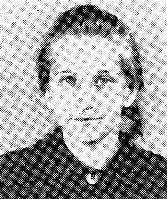
-
Robert Kulka
ID CardRobert was the son of Jewish parents, Leopold and Florentina Kulka, and was raised in the Moravian town of Olomouc. After completing secondary school, he attended a business school until 1909. He began a business in Olomouc and in 1933 he married Elsa Skutezka from the Moravian city of Brno. The couple made their home in Olomouc. 1933-39: The Kulkas' son, Tomas, was born a year and a day after they were married. In 1937 Elsa's father passed away and the Kulkas moved to Brno, where Elsa and her husband…
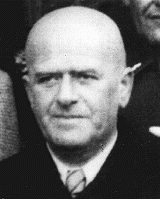
-
Tomas Kulka
ID CardTomas' parents were Jewish. His father, Robert Kulka, was a businessman from the Moravian town of Olomouc. His mother, Elsa Skutezka, was a milliner from Brno, the capital of Moravia. The couple was well-educated and spoke both Czech and German. They married in 1933 and settled in Robert's hometown of Olomouc. 1933-39: Tomas was born a year and a day after his parents were married. When Tomas was 3, his grandfather passed away and the Kulkas moved to Brno, which was his mother's hometown. On March 15,…

-
Wolfgang Kusserow
ID CardWhen Wolfgang was an infant, his parents became Jehovah's Witnesses. His father moved the family to the small Westphalian town of Bad Lippspringe when Wolfgang was 9. Their home became the headquarters of a new Jehovah's Witness congregation. Wolfgang and his ten brothers and sisters grew up studying the Bible daily. 1933-39: The Kusserows were under close scrutiny by the Nazi secret police because of their religion. As a Jehovah's Witness, Wolfgang believed that his highest allegiance was to God and His…

-
Sylvia Winawer
ID CardSylvia's Jewish-born parents had converted to Christianity as young adults, and Sylvia was raised in the Christian tradition. Mr. Winawer was a successful lawyer and the family lived in an apartment in the center of Warsaw. Sylvia's mother collected art. 1933-39: Sylvia attended a private school run by the Lutheran Church, and she loved her school and classmates. When she was 9, her parents brought her the most wonderful "present"--a new sister! Two years later life changed when the Germans invaded Poland…

-
Warsaw district handbill announcing penalties for anyone caught assisting Jews
ArtifactOn September 5, 1942, the SS and Police Leader of the Warsaw District issued this announcement threatening the death penalty for anyone who aided Jews who had left the ghetto without authorization. This poster was put up in the wake of the mass deportation of Jews from the Warsaw ghetto to the Treblinka killing center in summer 1942. SS officials were well aware that thousands of Jews had fled the ghetto to go into hiding and urged people to turn them in. The poster reminds the city's non-Jewish…

-
Frances Perkins
ArticleFrances Perkins was FDR's secretary of labor. Learn about her role in the rescue of European Jews whose lives were threatened by the Nazi regime.

-
Law on the Head of State of the German Reich
ArticleThe Law on the Head of State of the German Reich was the last step in destroying democracy in interwar Germany and making Adolf Hitler a dictator. Learn more.
-
Doriane Kurz describes appell (roll call) in Bergen-Belsen
Oral HistoryDoriane's Jewish family fled to Amsterdam in 1940, the same year Germany occupied the Netherlands. Her father died after deportation to Auschwitz. After their mother was seized, Doriane and her brother hid with gentiles. The three were reunited at Bergen-Belsen, where they were deported via Westerbork. They were liberated during the camp's 1945 evacuation, when Doriane was 9. Her mother died of cancer soon after Doriane helped her recover from typhus. Doriane and her brother immigrated to the United States.
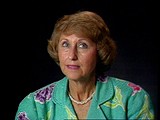
-
Izak Lichtenstein Testimony Excerpt
ArticleRead an excerpt from Izak Lichtenstein’s 1947 testimony about the resistance movement in the Lachva (Lachwa) ghetto.
-
SS: Key Dates
ArticleKey dates in the history of the SS (Schutzstaffel; Protection Squadrons), charged with the leadership of the “Final Solution,” the murder of European Jews.

-
Theresienstadt: Final Weeks, Liberation, and Postwar Trials
ArticleThe Theresienstadt camp-ghetto existed from 1941 to 1945. Learn about its final weeks, liberation, and the postwar trials of SS commandants and other staff.
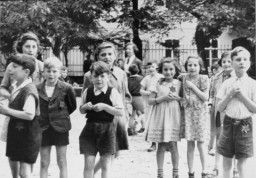
-
Bergen-Belsen: Key Dates
ArticleExplore a timeline of the history of the Bergen-Belsen camp in the Nazi camp system. Initially a POW camp, it became a concentration camp in 1943.
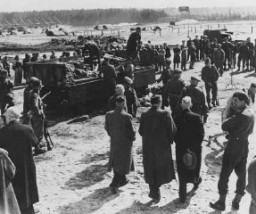
-
The Press in the Third Reich
ArticleAfter rising to power, the Nazis eliminated freedom of the press in Germany. Learn more about how they established control over the press and manipulated it.

-
Stutthof
ArticleLearn about the Stutthof camp from its establishment until liberation in May 1945, including conditions, forced labor, subcamps, and death marches.
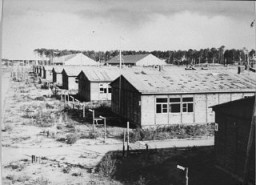
-
Raoul Wallenberg and the Rescue of Jews in Budapest
ArticleSwedish diplomat Raoul Wallenberg led an extensive rescue effort during the Nazi era. His work with the War Refugee Board saved thousands of Hungarian Jews.
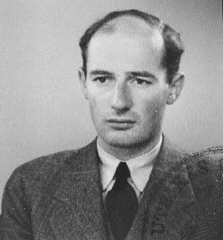
-
Kindertransport, 1938–40
ArticleKindertransport refers to a series of rescue efforts between 1938 and 1940 that brought thousands of refugee children to Great Britain from Nazi Germany.
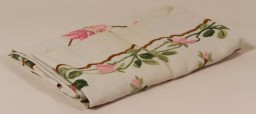
-
Theresienstadt
ArticleThe Theresienstadt camp/ghetto served multiple purposes during its existence from 1941-45 and had an important propaganda function for the Germans. Learn more.

-
Berlin
ArticleBerlin was home to Germany’s largest Jewish community. It was also the capital of the Third Reich and the center for the planning of the "Final Solution."

-
Tarnow
ArticleLearn about the prewar Jewish community of Tarnow, German occupation, deportations and killings of the Jewish population, ghettoization, and resistance.

-
Riga
ArticleGerman forces occupied Riga, Latvia in July 1941. Learn more about the establishment of the Riga ghetto, mass shootings of Jews, and Jewish resistance.

-
The Evian Conference
ArticleAt the July 1938 Evian Conference, delegates from nations and organizations discussed the issue of Jewish refugees fleeing persecution in Nazi Germany. Learn more
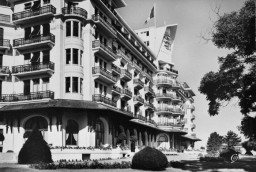
-
Death Marches
ArticleNear the end of WWII, the Germans began marching prisoners out of camps and away from the front. Read more about the brutal conditions of these death marches.

-
Prisoners of the Camps
ArticleJews were the main targets of Nazi genocide. Learn about other individuals from a broad range of backgrounds who were imprisoned in the Nazi camp system.

-
1939: Key Dates
ArticleExplore a timeline of key events during 1939 in the history of Nazi Germany, World War II, and the Holocaust.
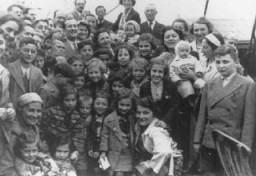
-
Flossenbürg: Key Dates
ArticleExplore a timeline of the history of the Flossenbürg camp in the Nazi camp system from its establishment in 1938 until liberation in 1945.

-
Purim
ArticleLearn about the background and traditional observances of Purim, a Jewish holiday marking the deliverance of the Jews from a royal death decree.
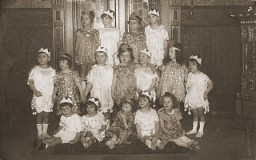
-
The Biological State: Nazi Racial Hygiene, 1933–1939
ArticleBetween 1933-1939, Nazi eugenics and racial hygiene led to policies like mass sterilization and criminalizing marriage between Jews and non-Jews.

-
The SA
ArticleThe SA (Sturmabteilung) was a paramilitary organization integral to Hitler’s ascension to power. Learn more about the rise and fall of the SA.

-
King Christian X of Denmark
ArticleDid King Christian X of Denmark wear a yellow star in support of the Danish Jews? Read more about the historical truth behind the legend.
-
Mein Kampf
ArticleAdolf Hitler's Mein Kampf (My Struggle) is the best known and most popular Nazi text ever published with over 12 million copies sold from 1925 to 1945.
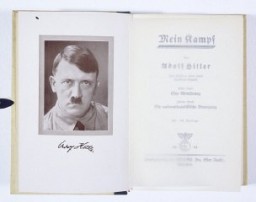
-
Raoul Wallenberg Arrives in Budapest
Timeline EventJuly 9, 1944. On this date, Raoul Wallenberg arrived in Budapest and began his wartime rescue efforts.
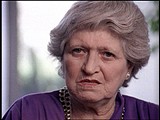
-
German Troops Occupy Hungary
Timeline EventMarch 19, 1944. On this date, Germany occupied Hungary and installed General Dome Sztojay as prime minister.
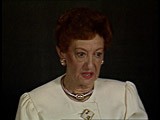
-
Ceasefire Ends Hostilities of World War I
Timeline EventNovember 11, 1918. On this date, a negotiated ceasefire ends the fighting of World War I when it goes into effect at 11am.
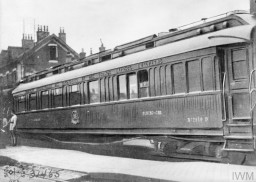
-
Refugees
ArticleThe search for refuge frames both the years before the Holocaust and its aftermath. Learn about obstacles refugees faced when searching for safe havens.

-
Pogroms
ArticleThe term “pogrom” historically refers to violent attacks on Jews by local non-Jewish populations. Learn about pogroms before, during, and after the Holocaust.
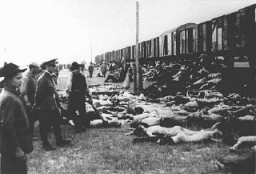
-
Trawniki
ArticleFrom July 1941-May 1944, the SS camp at Trawniki had several purposes. It is best known as the training site for auxiliary police guards used in Nazi killing centers. Learn more.

-
Heinrich Himmler
ArticleSS Chief Heinrich Himmler was chief architect of the "Final Solution." Learn more about Himmler, one of the most powerful men after Hitler in Nazi Germany.

-
Hajj Amin al-Husayni: Arab Nationalist and Muslim Leader
ArticleHajj Amin al-Husayni claimed to speak for the Arab nation and the Muslim world and sought an alliance with the Axis powers during WWII. Learn more about his actions

-
Auschwitz
ArticleThe Auschwitz camp system, located in German-occupied Poland, was a complex of 3 camps, including a killing center. Learn about the history of Auschwitz.
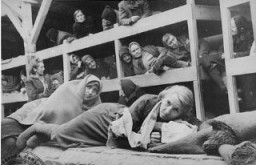
-
Inge Berg
ID CardInge lived with her parents, grandparents, uncle, and younger sister, Gisella, in Lechenich, a small village outside Cologne. The Bergs were an observant Jewish family. Inge's grandfather was the president of the local synagogue association and her uncle was the cantor. Her father, Josef was a respected cattle dealer, who had many business and personal contacts with their Jewish and non-Jewish neighbors. 1933–39: In 1935, two years after the Nazis came to power, Inge was forced to leave public school in…
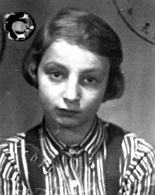
-
Hinda Chilewicz
ID CardHinda was the eldest of three children in a comfortable middle class Jewish family. Her father owned a textile business in Sosnowiec and her mother attended to the home. Sosnowiec in southwestern Poland had a growing Jewish community of almost 30,000 people. There was a Jewish hospital as well as religious schools. 1933–39: Hinda was just 13 years old when German troops invaded Poland on September 1, 1939. Three days later, they occupied Sosnowiec and terrorized the Jewish community, killing over a…

-
Gisella Renate Berg
ID CardGisella lived with her parents, grandparents, uncle, and older sister, Inge, in Lechenich, a small village outside of Cologne. The Bergs were an observant Jewish family. Gisella's grandfather was the president of the local synagogue association and her uncle was the cantor. Her father, Josef was a respected cattle dealer, who had many business and personal contacts with their Jewish and non-Jewish neighbors. 1933–39: Gisella was born several months after the Nazis came to power. Her parents feared for…
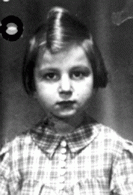
-
Susi Hilsenrath
ID CardThe Hilsenraths lived in Bad Kreuznach, a city in western Germany with a Jewish community that dated back to the 13th century. Susi was the eldest of three children. Her father owned a thriving linen store, and her mother took care of Susi and her two brothers. 1933–39: After the Nazis came to power, the Hilsenraths, like other Jewish families, began to feel the effects of increased antisemitism. Susi was forced to leave the public school, along with the other Jewish children. Even walking on the…
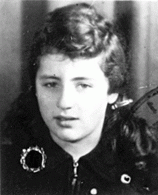
-
Cecilie Klein-Pollack
ID CardCecilie was the youngest of six children born to a religious Jewish family in the Czechoslovakian town of Yasinya. Her father, who was from Poland, taught private lessons in math and German. The family owned a small grocery store, which Cecilie's mother managed. 1933-39: Cecilie's father died in 1934 when she was 9. In March 1939 Hungary, which was sympathetic to Nazi Germany, annexed the area of Czechoslovakia where they lived. One day, Cecilie arrived home to find her mother and sister had been arrested…
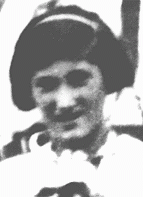
-
Isak Saleschutz
ID CardIsak was one of seven children born to devout Hasidic Jewish parents living in Dubas. By 1900, all of his siblings had immigrated to America; Isak remained in Poland due to his strong religious convictions. Through an arranged marriage, he was wed to Ester Berl when he was 18. They settled in Kolbuszowa, a small town near Dubas, where Isak ran a successful wholesale general store. 1933-39: On September 9, 1939, the German army occupied Dubas. They hanged two Jews to demonstrate the consequences of not…
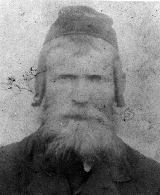
-
Urszula Kaczmarek
ID CardUrszula was one of four children born to Franciszek and Jadwiga Kaczmarek, who lived in the industrial city of Poznan in western Poland. The family lived at 11 Smolnej Street. Like their parents, the Kaczmarek children were baptized in the Roman Catholic faith. 1933-39: As one of the older children in the family, Urszula helped her mother with the housework. She was 10 years old when the Germans invaded Poland on Friday, September 1, 1939. German planes bombed Poznan that same day, and German troops…
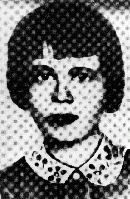
-
Joseph von Hoppen Waldhorn
ID CardJoseph was the youngest of three children born to immigrant Jewish parents. His Polish-born father was a former officer in the Austro-Hungarian army who had met and married Joseph's Hungarian-born mother during World War I. Joseph was raised in a religious household and grew up speaking French. 1933-39: Joseph's mother says it's better here in Paris than in the poor village where she grew up. Unlike his mother, who speaks broken French, Joseph and his older sisters have grown up speaking French fluently.…

-
Paula Wajcman
ID CardPaula was raised in a religious Jewish family in Kielce, a city in the southeast of Poland. Her family lived in a modern two-story apartment complex. Paula's father owned the only trucking company in the district. Her older brother, Herman, attended religious school, while Paula attended public kindergarten in the morning and religious school in the afternoon. 1933-39: Paula's school uniform was a navy blazer with a white blouse and pleated skirt. At age 9, she did the "Krakowiak" dance at school. Boys…

